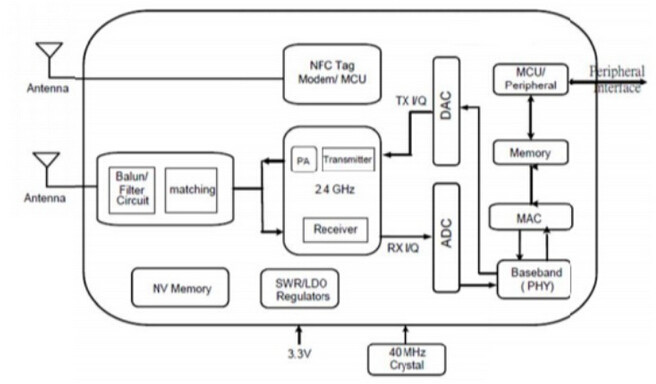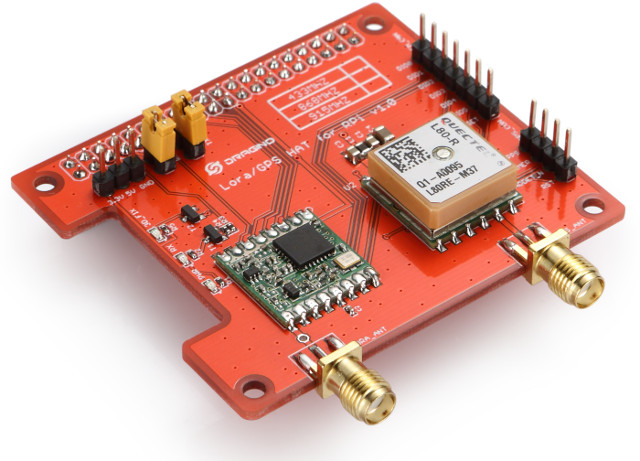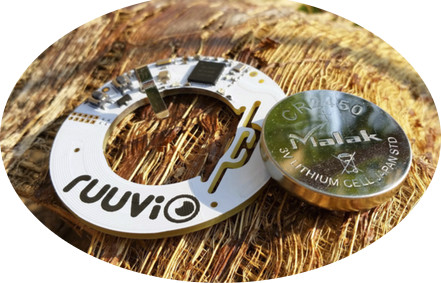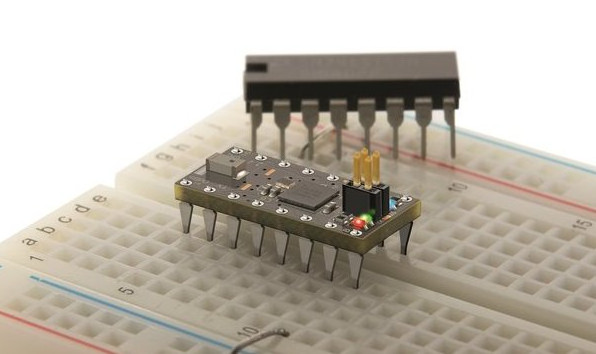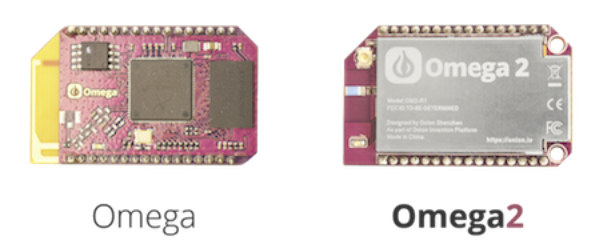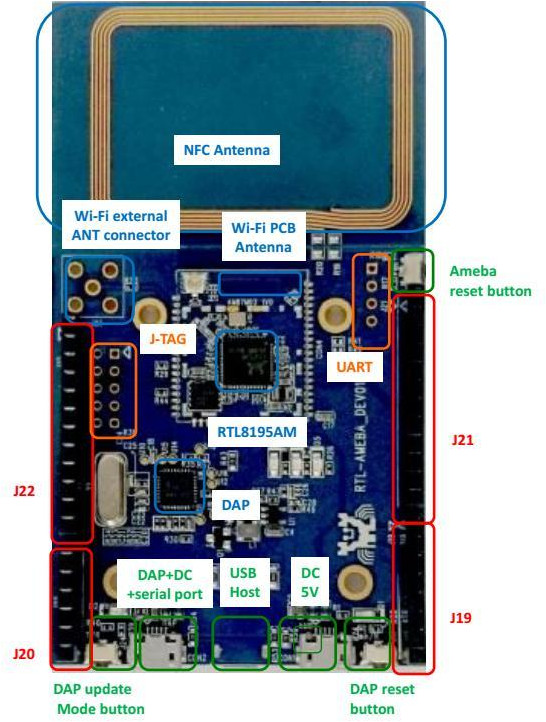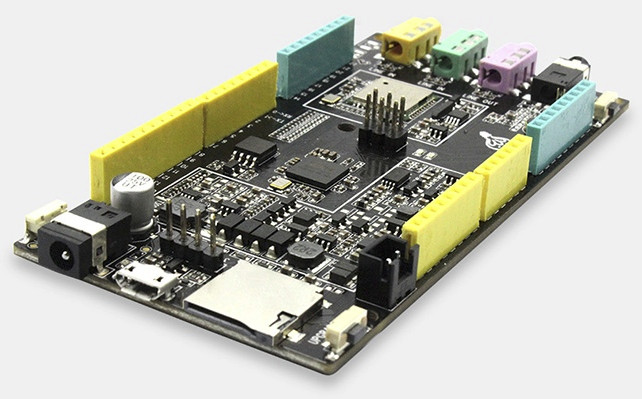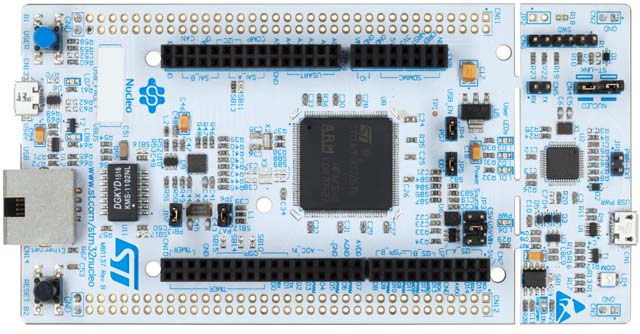We were made aware of a potential ARM based ESP8266 competitor last week with Realtek RTL8710 WiFi modules selling for about $3.5 shipped per unit, and under $2 per unit for larger orders (100+ pieces). Hardware is good, but for a platform to be successful, or even just useful, you also need software support. So I started doing some research into IoT-Tech BBS and asked ICStation for an “SDK” for the module they sold. I ended up on this forum post providing an “Realtek RTL8710 SDK” via Baidu (password: brwp), which turned out to be about the same as the Google Drive link provided by ICStation, and only contain minimal documents, as well as cracked Windows IAR Embedded Workshop and JLink tools. There are also some more technical details in Chinese only in another forum post, and well as B&T RTL8710 module datasheet (PDF). However, if you don’t read Chinese […]
Dragino LoRa/GPS HAT Board for Raspberry Pi Sells for $32
There are several ways to play with LoRaWAN protocol on the Raspberry Pi including RisingHF Discovery kit or Cooking Hacks LoRa Shield for Raspberry Pi, but the latter requires you to spend close to $100 just for the shield, the complete Lora discovery kit costs close to $400. Dragino Tech LoRa/GPS HAT board should be a more cost effective way to get started with LoRa on Raspberry Pi, as it sells for $32 + shipping on Tindie. Dragino LoRa/GPS HAT specifications: Connectivity LoRa Semtech SX1276/SX1278 transceiver @ 433/868, or 915 MHz (Country dependent, pre-configured in the factory) 168 dB maximum link budget. +20 dBm – 100 mW constant RF output vs. +14 dBm high efficiency PA. Programmable bit rate up to 300 kbps. GPS L80 GPS module based on Mediatek MT3339 SoC Horizontal Position Accuracy: autonomous <2.5 m CEP. TTFF@-130dBm with EASY (AGPS): Cold Start <15s,Warm Start <5s,Hot start <1s; […]
RuuviTag Open Source Bluetooth & NFC Sensor Beacon is Based on Nordic Semi nRF52832 SoC (Crowdfunding)
I’ve recently featured Puck.js Bluetooth 4.2/5.0 Beacon on CNX Software, but there’s another similar option with RuuviTag, also powered by the latest Nordic Semi nRF52832 ARM Cortex-M4 SoC, and RuviiTag+ version that includes multiple sensors: 3-axis accelerometer, and temperature, humidity, and pressure sensor. RuuviTag & RuuviTag+ specifications: SoC – Nordic Semi nRF52832 ARM Cortex-M4F micro-controller @ 64 MHz with Bluetooth Smart and NFC Connectivity Bluetooth 4.2 Smart, Bluetooth 5.0 Ready; over 500 meters line of sight range (with -4dBm power); up to 1.4 km with +4 dBm Integrated NFC antenna Expansion – 8x through holes with 6x GPIOs, and 2x power signals Sensors On-chip temperature sensor RuuviTag+ – Bosch BME280 environmental sensor (pressure, humidity, and temperature), STMicro LIS2DH12 3-axis accelerometer Misc – User/reset button, 2x LEDs, 10-pin SWD debug connector Battery – CR2450 / CR2477 battery up to 10 years depending on application Dimensions – N/A Temperature Range – -40°C […]
OSHCHIP Breadboard Friendly Bluetooth Smart Board Comes in a Tiny 16-pin DIP Package
OSHCHIP is a tiny development board powered by a Nordic Semi ARM Cortex-M0 Bluetooth LE / ANT SoC that neatly fits on a breadboard, and beside wireless connectivity thanks to its 2.4 GHz radio, also provides up to 14 I/Os to interface with external hardware. OSHCHIP specifications: Nordic Semi nRF51822 ARM Cortex-M0 MCU @ 16 MHz with 256KB Flash Memory, 32KB SRAM Radio – 2.4 GHz Radio with support for 4 protocols: Bluetooth Low Energy (BLE) / Bluetooth Smart, Gazell, ESB (Enhanced Shock Burst), and optionally ANT Antenna – Built-in antenna, range is 10 to 20 feet, depending on environment (metal, desks, chairs, …) Expansion – 14 general purpose I/O pins. All peripherals (except the ADC) can use any I/O pin: UART, 10-bit ADC, Counter/Timers, SPI, I2C Security – AES Encryption, Random Number Generator. Misc – Temperature sensor, RTC, Watchdog Timer Quadrature Decoder, 3 LEDs, Power Supply – 1.8V to 3.6V […]
Onion Omega2 is a $5 Linux WiFi IoT Board (Crowdfunding)
Onion Omega board was first introduced in 2015. The tiny OpenWrt Linux board featured an Atheros AR9331 processor with GPIO headers, and various baseboards and add-ons. The company has now launched a Kickstarter campaign for the second versions – Omega2 & Omega2 Plus – with a faster processor @ 580 MHz, compatible with docks and add-ons boards used for Omega, and a much lower price with $5 for the Omega2, and $9 for Omega2 Plus with more storage and memory. Omega2 & Omega2 Plus specifications: WiSoC – 580 MHz processor, possibly Mediatek MT7688 MIPS processor used in LinkIt Smart 7688 System Memory Omega2 – 64MB Omega2 Plus – 128MB Storage Omage2 – 16MB flash Omega 2 Plus – 32MB flash + micro SD slot Connectivity Built-in – 802.11 b/g/n WiFi with on-board and external antenna support Via add-on boards – Bluetooth 4.0 LE, GPS, and 2G/3G Expansion – 15x GPIO, […]
$25 Ameba Arduino IoT Board Powered by Realtek RTL8195AM MCU Supports WiFi and NFC
Ameba Arduino is another development board for the Internet of Things, but beside WiFi connectivity, it also includes an NFC tag, and can support Ethernet via Arduino compatible headers. The brain of the board is Realtek RTL8195AM ARM Cortex M3 MCU that includes WiFi connectivity, hardware SSL, SRAM, and flash. Ameba Arduino Specifications: MCU – Realtek RTL8195AM ARM Cortex M3 @ up to 166MHz with 512KB SRAM, 1MB ROM, WiFi connectivity, hardware SSL engine Memory – 2MB SDRAM Connectivity – WiFi 802.11 b/g/n 1T1R with PCB antenna and external antenna connector, NFC tag with read/write Function, 10/100M Ethernet via expansion headers USB – 1x micro USB OTG port, 1x micro USB host port Expansion Headers SDIO Device/SD card controller Up to 30x GPIOs 2x SPI interfaces supporting master and slave modes 3x UART interfaces including 2 HS-UART and one log UART 4x I2C Interfaces supporting master and slave mode 2x […]
Fireduino Arduino Compatible Board Features Rockchip RKnanoD Dual Core Cortex-M3 MCU (Crowdfunding)
Rockchip RKNanoD dual core Cortex M3 micro-controller was introduced last year for IoT and audio applications, and the Firefly team, known for their FirePrime or Firefly-RK3288 development boards, has designed an Arduino compatible board based on the MCU with lots of audio ports, Arduino headers, and WiFi connectivity. Fireduino specifications: MCU – Rockchip RKnanoD dual core ARM Cortex M3 MCU @ up to 250 MHz (system core) / 500 MHz (calculate core) with respectively 640 KB and 384 KB RAM Storage – 4 or 8MB SPI flash + micro SD slot Audio 24-bit/192 KHz audio codec (built in MCU) with HW accelerator for APE, FLAC, OGG, and MP3 audio decoding 1x 3.5mm analog audio jack 2x 3.5mm LINE In jacks 1x On-board microphone DLNA wireless audio support Connectivity – 802.11 b/g/n WiFi via Ampak AP6181 module Expansion Arduino header with I2C, SPI, ADC, GPIO, PWM, UART LCD interface (Intel 8080 […]
STMicro Unveils Two Low Cost STM32F7 ARM Cortex M7 Development Boards
STMicroelectronics introduiced its STM32F7 ARM Cortex M7 micro-controller family in 2014, and they released a $49 STM32F746G discovery board later in 2015. The company has now launched two new low cost development boards with the $23 STM32 Nucleo-144 board based on STM32F767 MCU, and a $79 Discovery Kit powered by STM32F746 MCU with TFT-LCD and MIPI-DSI support. STM32 Nucleo-144 development board Key feature of NUCLEO-F767ZI board: MCU – STMicro STM32F767ZI ARM Cortex M7 microcontroller @ 216 MHz with FPU, DSP, MMU, 2MB flash, 512 KB SRAM, 16 KB instruction TCM RAM (for critical real-time routines), and 4 KB backup SRAM Connectivity – IEEE-802.3-2002 compliant Ethernet connector USB – 1x micro USB OTG or full speed device Extension: ST Zio connector including support for Arduino UNO v3 connectivity, and additional signals (A6 to A8, D16 to D72) ST morpho extension pin header footprints for full access to all STM32 I/Os On-board […]


